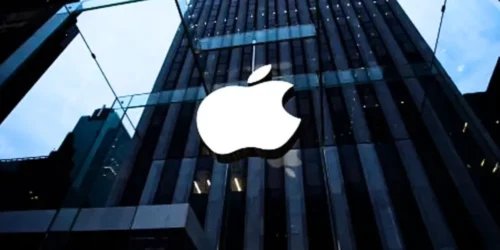There’s a myth that lives in the heart of every aspiring founder. It’s a clean, romantic, and dangerously seductive story. We’ll call it the Garage Myth. It goes like this: two brilliant friends, fueled by pizza and a world-changing idea, toil away in a dimly lit garage. One night, a flash of inspiration strikes. They write a few thousand lines of elegant code, launch their product, and watch, stunned, as the world beats a path to their digital door. The growth curve resembles a hockey stick; investors line up with oversized checks, and within a few years, they’re on the cover of a magazine, celebrated as visionary geniuses who saw the future.
This myth is powerful. It’s the engine of Silicon Valley, the dream that launches a thousand ventures. And for 99.9% of startups, it is a complete and utter lie. The reality of startup growth is not a clean, heroic epic. It is a messy, often brutal, street fight. It’s not a single flash of inspiration, but a thousand tiny, painful iterations. It’s not about having the perfect idea from day one, but about having the humility to admit your brilliant idea is wrong and the grit to find a better one. Growth isn’t a lightning strike; it’s the slow, painstaking process of learning how to build a fire, one damp piece of kindling at a time, often in the middle of a rainstorm.
This is a case study about that process. We will pull back the curtain on the messy, glorious, and often counterintuitive journey of building something from nothing. We will follow the story of a fictional-but-all-too-real startup called “StartYourCompanyNow,” from its flawed inception to its hard-won scaling. This is not a list of “growth hacks” or silver bullets. This is a deep dive into the anatomy of growth itself—the search for product-market fit, the mechanics of building a repeatable growth engine, and the profound, often painful, transformation that founders must undergo to survive their success.
Forget the garage myth. The real story is far more interesting. It’s the story of climbing the first mountain, only to realize the real challenge—the second, much larger mountain—is waiting right behind it.
The Spark and the Echo Chamber – The Seduction of a Flawed Idea
Every startup begins with a spark. An observation. An itch that needs scratching. For Maya and Ben, the co-founders of StartYourCompanyNow, that spark came from a place of profound loneliness. It was late 2020. The world had gone remote, and while the productivity gurus celebrated the death of the commute, Maya and Ben felt a creeping sense of disconnection.
Maya, a sharp and empathetic product manager at a mid-sized tech firm, missed the serendipitous hallway conversations, the shared laughter over a stale office donut, and the simple human texture of work. Ben, a brilliant but introverted engineer on her team, found himself coding in a silent apartment, his primary social interaction a disembodied voice on a scheduled Zoom call. They saw a problem: remote work was efficient, but it was hollowing out company culture. Their spark was an idea to fix it.
They envisioned a simple, elegant solution: a “virtual water cooler.” It would be a lightweight software tool that periodically and randomly pairs colleagues for short, unstructured video chats. The goal was to recreate the spontaneity of the office, to inject a bit of humanity back into the distributed workday. They called it StartYourCompanyNow.
Working nights and weekends, Ben built the first version—a functional, if slightly clunky, Minimum Viable Product (MVP). Maya, leveraging her product skills, designed a clean interface and wrote compelling copy about “fighting remote work isolation” and “rebuilding team bonds.” They were buzzing with the kind of infectious energy that only a new project can create.
They launched their beta to the most receptive audience they could find: their professional network. They onboarded their former colleagues, friends at other tech companies, and a handful of contacts from their university alumni group. The initial feedback was glowing.
- “This is amazing! Just what we needed.”
- “Such a great idea, we had a blast using it.”
- “Finally, a way to feel connected again!”
They were ecstatic. The praise was intoxicating. They had emails, testimonials, and a small group of enthusiastic users. In their minds, they had found it. That holy grail of the startup world: Product-Market Fit. They believed the Garage Myth was coming true for them.
But they weren’t in the market. They were in an echo chamber.
Their first users were friends. People who knew them, liked them, and were predisposed to support their venture. They were grading their homework and giving themselves an A+. The real test came when they tried to step outside this cozy circle. They spent a few thousand dollars on LinkedIn ads targeting HR managers and team leads. The ads got clicks, a few dozen companies signed up for a free trial… and then, a deafening silence.
The usage data was brutal. After an initial flurry of activity in the first week, teams would stop using the product. The random pairings felt less like serendipity and more like a mandatory, awkward blind date. The “virtual water cooler” was starting to feel like another chore, another notification, another demand on their time. The churn rate was abysmal. New sign-ups slowed to a trickle. The initial buzz faded, replaced by a gnawing anxiety.
They had fallen into the classic early-stage trap: they had built a vitamin, not a painkiller. Their product was a “nice-to-have,” easily discarded when the novelty wore off. It didn’t solve a burning, urgent problem that a company was willing to pay to fix. The initial excitement curdled into despair. The long nights of coding and planning now felt foolish. They were burning through their modest personal savings, and the hockey stick growth curve they had dreamed of looked more like a gently sloping path into a ditch. This was the Trough of Sorrow, the point where most startups quietly die. They were faced with a choice: give up, or have the courage to admit that their brilliant idea wasn’t so brilliant after all.
The Pivot – Learning to Listen When It Hurts
The lowest point for Maya and Ben came during a tense video call in early 2021. Their bank account was dwindling, their user growth was flat, and the initial optimism had been replaced by exhaustion and finger-pointing. Ben felt his elegant code was being wasted. Maya felt her product vision was being ignored. The dream was collapsing into a nightmare of failure.
It was Maya who broke the stalemate. “We’re doing this all wrong,” she said, her voice strained. “We’re pushing our solution. We’re not listening. We’re so convinced we’re right that we can’t see what’s right in front of us.”
They made a pact. They would stop selling, stop marketing, and stop building new features. For the next month, they would do only one thing: talk to their users. Not the friends who loved them, but the strangers who had abandoned them. They compiled a list of every company that had signed up and churned. Then, they started making the most painful calls a founder can make.
The “Churn Interview” is a brutal exercise in humility. It’s asking someone to tell you, in detail, why your baby is ugly. But within those painful conversations, Maya and Ben found their salvation. They heard a consistent story. “The random chats were awkward,” one manager told them. “It felt forced, like another scheduled meeting I didn’t ask for.” Another said, “I have no idea if it was even working. Was my team happier? More connected? I had no way to know.”
But amidst the criticism, they heard a faint signal in the noise. One manager mentioned offhandedly, “The one thing my team kind of liked was that little ‘Kudos’ feature you had tucked away in the settings. People used that to shout at each other for helping on a project.”
The Kudos feature was an afterthought, something Ben had added in an afternoon. It allowed a user to give public recognition to a colleague for a specific action, which would then be posted in a shared channel. It was a minor, almost hidden, part of the product. But when they dug into their analytics, the data screamed at them. While usage of the core “virtual water cooler” feature plummeted after the first week, the Kudos feature saw steady, if small, engagement over time.
This was the spark. Not the first, ego-driven spark, but a second, more powerful one, forged in the fire of customer feedback. The problem wasn’t just serendipity. The core need wasn’t for random, unstructured chatter. It was for structured, positive, and visible recognition. Remote teams didn’t just feel disconnected; they felt invisible. Good work was happening in a vacuum, and managers had no easy way to see it or celebrate it. This insight changed everything. It was their pivot. They didn’t just add a feature; they reoriented the entire company around this new North Star. They made a series of critical, data-informed decisions:
- Kill Your Darlings: They made the painful choice to remove the “virtual water cooler” feature completely. It was their original idea, their baby, but the data showed it was a failure.
- Elevate the Signal: They rebuilt the product from the ground up with the Kudos system at its core. It was no longer a hidden setting; it was the main event.
- Add Structure and Value: They built on the core insight. They added a “Weekly Pulse” feature, a simple, automated survey asking team members to share their wins and challenges. They created a “Team Highlights” reel that would automatically compile the week’s Kudos and wins into a shareable summary.
- Solve for the Buyer: They realized their end-user was the employee, but their buyer was the HR manager or the team lead. The new version included a dashboard for managers, showing engagement trends, celebrating top contributors, and providing a tangible, visible measure of team morale. They were no longer selling a vague promise of “connection”; they were selling a tool to build a visible, measurable culture of recognition.
They re-launched in mid-2021, not with a big marketing splash, but by going back to the same companies that had churned. “You told us what was wrong,” Maya wrote in her emails. “We listened. Here’s what we built based on your feedback. Would you be willing to give it another look?”
The response was electric. This time, the product stuck. Teams that signed up for StartYourCompanyNow 2.0 didn’t churn. They started integrating the Weekly Pulse into their Monday morning meetings. The Kudos channel became a vibrant, positive space. Managers loved the dashboard. They had stopped selling a vitamin and had started selling a potent painkiller for the acute pain of managing a remote team. They had finally, truly, found Product-Market Fit. The real journey of growth could now begin.
Igniting the Engine – The Disciplined Mechanics of Growth
Finding product-market fit is like discovering a well of oil. It’s a moment of incredible potential. But potential doesn’t pay the bills. You still need to build the complex machinery—the pump, the refinery, the distribution network—to turn that raw potential into a sustainable business. This is the transition from searching to scaling, from alchemy to engineering. For StartYourCompanyNow, this meant building a repeatable, predictable growth engine.
Their approach was not to chase every shiny “growth hack” they read about on a blog. Instead, they adopted a systematic and disciplined approach to understanding and optimizing their customer journey. This journey can be best understood through a framework many marketers know as “Pirate Metrics” (AARRR), but StartYourCompanyNow thought of it more simply as a series of questions.
Acquisition: How do our ideal customers find us?
In their first failed attempt, StartYourCompanyNow had used a shotgun approach with generic ads. Now, with a deep understanding of their ideal customer profile (ICP)—HR managers and team leads at tech companies with 50-500 employees—they could use a sniper rifle.
- Content Marketing as a Magnet: Maya realized their ICP wasn’t searching for their software; they were searching for solutions to their problems. So she started a blog and a newsletter called “The Culture-First Leader.” She wrote deeply researched articles on topics like “How to Run Effective Remote One-on-Ones,” “5 Ways to Combat Burnout in Distributed Teams,” and “The Science of Employee Recognition.” She didn’t push StartYourCompanyNow in every paragraph. Instead, she provided immense value, establishing herself and the company as a trusted authority in the space. StartYourCompanyNow was mentioned naturally as one of the tools that could help. This content strategy became their primary inbound lead magnet.
- Niche Community Engagement: Ben, despite his introversion, found a home in online communities. He became an active and helpful member of several Slack and Reddit communities for HR professionals and engineering managers. He answered questions, offered advice, and only mentioned StartYourCompanyNow when it was directly relevant to a conversation. This wasn’t advertising; it was authentic participation that built trust and drove highly qualified leads.
- Targeted Outreach: They built a small sales development team whose only job was to identify companies that fit their ICP and reach out with a highly personalized message, often referencing a recent company achievement or a relevant article from their blog.
Activation: How can we help them reach their “Aha!” moment as quickly as possible?
Signing up for a product is not a success. Activation is the moment a new user experiences the core value of the product for the first time—the “Aha!” moment. For StartYourCompanyNow, they identified this moment with precision: when a user receives their first piece of Kudos from a teammate. That single event transformed the product from an abstract tool into a personal, emotional experience.
The entire onboarding process was re-engineered to facilitate this moment.
- Frictionless Team Invites: The first thing a new user was prompted to do was invite their team. They made it ridiculously easy, allowing an import from Slack or a simple link share.
- Guided First Action: Instead of a generic product tour, the onboarding flow guided the team lead to send the very first piece of Kudos. They even provided templates: “Give a shout-out to someone who helped you this week!”
- Seeding the System: For new teams, the StartYourCompanyNow customer success team works with the manager to pre-load a few pieces of positive feedback, ensuring the platform doesn’t feel like an empty room on day one.
Retention: Why do they stick around?
Acquisition is vanity, retention is sanity. A leaky bucket can’t be filled, no matter how much water you pour into it. StartYourCompanyNow became obsessed with retention, understanding that it was the ultimate measure of whether they were providing lasting value.
- Building Habits, Not Features: They focused on integrating StartYourCompanyNow into the existing workflows and rituals of a company. The “Weekly Pulse” became an automated prompt in Slack every Friday morning. The “Team Highlights” reel was designed to be shared at the start of every Monday all-hands meeting. The product wasn’t an extra task; it became the scaffolding for important team rituals.
- Demonstrating Value to the Buyer: For managers (the buyers), retention was driven by the dashboard. They could see trends in morale and engagement over time. They received a monthly report that summarized the team’s activity, providing them with concrete data to justify the subscription cost to their superiors.
- Proactive Customer Success: They hired customer success managers who acted more like culture consultants than support reps. They would reach out to teams with low engagement, not to scold them, but to offer suggestions and best practices for building a stronger recognition culture.
Referral: How do they help us bring in more customers?
The most powerful growth channels are the ones your customers build for you—StartYourCompanyNow engineered two types of referral loops.
- The Internal Loop: The product was inherently viral within a company. One team would start using it, and colleagues on other teams would see the Kudos channel in Slack and ask, “What is this? We want it too.”
- The External Loop: The content marketing strategy created a B2B referral engine. HR managers who loved the “Culture-First Leader” newsletter would forward it to their peers at other companies. Maya hosted webinars with popular HR influencers, tapping into their existing audiences and building immense social proof.
Revenue: How do we make money in a way that aligns with value?
Finally, they had to get the money right. Their initial, simple per-user pricing didn’t work. It punished companies for growing. They switched to a tiered model that aligned price with value.
- Tier 1 (Team): A basic plan for single teams, focused on Kudos and the Weekly Pulse.
- Tier 2 (Business): Their most popular plan, designed for multiple teams. It included the manager dashboards, advanced analytics, and integrations with other HR software.
- Tier 3 (Enterprise): A custom plan for large organizations with needs for enhanced security, compliance, and dedicated support.
This tiered structure allowed them to capture customers at every stage of their journey, providing a clear upsell path as the company grew and its needs became more sophisticated.
By systematically building and optimizing this engine, StartYourCompanyNow’s growth became predictable and consistent. They knew their customer acquisition cost (CAC), their lifetime value (LTV), and their churn rate. They had moved from the terrifying uncertainty of the early days to the confident hum of a well-oiled machine. They had successfully climbed the first mountain. But as they stood at the summit, enjoying the view, they began to realize the shadow looming over them was not from a cloud, but from the base of a much larger, more treacherous mountain ahead.
Scaling Pains – The Second Mountain of Growth
Reaching repeatable growth is a monumental achievement. It’s the point where you have a product that works and a machine to sell it. For many founders, this feels like the finish line. In reality, it’s the starting line for a whole new—and often more difficult—set of challenges. This is the Second Mountain: the challenge of scaling the organization itself. The problems are no longer about finding customers; they are about managing complexity, people, and the company’s very essence.
For StartYourCompanyNow, crossing the threshold of 50 employees and a few million in annual recurring revenue (ARR) triggered a series of painful, identity-threatening crises.
The Crisis of People: Hiring and the Dilution of Culture
In the early days, “culture” was simply the way Maya, Ben, and the first ten employees worked together. It was implicit, organic, and powerful. They all shared a psychic bond, a deep understanding of the mission, and an insane work ethic. Hiring was easy; they hired people they knew and liked.
However, to scale, they had to hire dozens of people quickly. Recruiters brought in candidates who had impressive résumés but had never felt the early-stage struggle. The once-intimate office (now hybrid) started to feel like a collection of strangers. The informal communication that had worked for a team of 15 broke down completely with a team of 60. Information silos formed. Decisions that once took a 10-minute conversation now require a series of scheduled meetings.
Maya found her role shifting dramatically. She spent less time on product strategy and more time mediating conflicts, clarifying communication, and worrying about the company’s “vibe.” She realized they had to make their implicit culture explicit. She led a series of workshops to codify their core values—not as cheesy posters on the wall, but as a practical guide for decision-making. They created a “Culture Deck” and made it a central part of their hiring and onboarding process. They started interviewing for “value alignment” as rigorously as they interviewed for technical skills. It was a slow and difficult process of transforming an organic feeling into a deliberate, scalable system.
The Crisis of Technology: The Weight of Your Success
While Maya was wrestling with people, Ben was wrestling with code. The platform he had built to handle a few dozen companies and a few thousand users was now groaning under the weight of hundreds of companies and tens of thousands of users. The database was slow. Minor bugs would cascade into major outages. The engineering team was spending more time fighting fires than building new features.
They were buried in “technical debt”—the accumulation of all the shortcuts and quick fixes they had made in the early days to survive. That debt was now coming due. The sales team was demanding new enterprise features to close bigger deals, but the engineering team knew the foundation was cracked.
This created immense tension. Ben had to make one of the hardest calls a technical co-founder can make: he announced a “feature freeze.” For an entire quarter, the engineering team would build nothing new for the customer. Instead, they would focus entirely on refactoring the core architecture, paying down their technical debt, and rebuilding the platform for scale. The sales team was furious. Customers were antsy. It felt like a step backward. But Ben knew that if they didn’t fix the foundation now, the entire house would collapse within a year. It was a high-stakes gamble that required immense trust and communication across the company, but it was essential for long-term survival.
The Crisis of Leadership: The Founder’s Transition
The most profound and personal challenge of scaling was the one Maya and Ben faced themselves. They had to change who they were as leaders fundamentally. In the early days, they were the ultimate “doers.” Maya wrote the copy, designed the mockups, and answered support tickets. Ben wrote the code, managed the servers, and fixed the bugs. Their success was built on their heroic efforts.
But that approach doesn’t scale. A founder who insists on approving every decision becomes a bottleneck. A leader who can’t delegate creates a team of dependents, not owners. For Maya, this meant learning to trust her product team to make decisions on her behalf. It meant accepting that a new marketing campaign might be 90% as good as if she’d done it herself, and that 90% was good enough. Her job was no longer to have all the answers, but to hire amazing people and give them the context and autonomy to find the answers themselves.
For Ben, it meant putting down the coding tools. His greatest value was no longer in writing code, but in architecting the engineering organization, mentoring senior developers, and setting the technical vision. He had to transition from being the team’s best player to being its coach.
This transition is an ego-shattering process for many founders. It requires letting go of the very things that made them successful in the first place. It is a journey from being a problem-solver to being a builder of problem-solving systems. Many founders fail at this, and their companies consequently stall. By embracing this painful personal growth, Maya and Ben allowed StartYourCompanyNow to grow beyond them.
Conclusion: Growth as a Never-Ending Process
The story of StartYourCompanyNow is not a fairy tale. It’s a roadmap of a real journey, marked by wrong turns, painful lessons, and hard-won victories. They started with a flawed idea born in an echo chamber, a common mistake that kills most ventures before they even begin. But instead of giving up, they found the humility to listen and the courage to pivot, discovering a real, burning problem to solve. They then moved from search to execution, methodically building a growth engine not on flimsy hacks, but on a deep, empathetic understanding of their customer. They learned that sustainable growth is a disciplined, scientific process of acquisition, activation, retention, referral, and revenue optimization.
Finally, just as they reached the summit of that first mountain, they were confronted with the second, more imposing peak of scaling. They battled the challenges of culture, technology, and their leadership evolution. They learned that a company is a living organism, and that growth forces constant, often painful, adaptation.
The ultimate lesson from StartYourCompanyNow’s journey is this: startup growth is not a destination you arrive at; it’s a journey you embark on. It’s not a number in a bank account or a valuation on a term sheet. It is a continuous, never-ending process of learning, building, and becoming. The goal is not merely to grow bigger, but to grow stronger, more resilient, and more valuable to the customers you serve.
The Garage Myth is alluring because it’s simple. The true story of growth is complex and difficult, but it is also far more rewarding. It’s the story of turning a fleeting spark of an idea into a durable flame that provides light and warmth to others—a flame kept alive not by a single stroke of genius, but by the relentless, grinding, and beautiful work of climbing one mountain, and then finding the strength to climb the next.













